Grasses generally produce the highest yields of all the plant species as well as make up the bulk of many mixes. Grasses are used for preventing erosion, adding carbon to a system, and providing forage. With high C:N ratios, grasses help provide ample residue. Here are our top 10 grasses by sales volume.
1. Cereal Rye (Secale cereale)
Cereal rye is the King of Cover Crops! With its robust root system, extreme cold tolerance, and the simplicity of adding to a row cropping system, it’s easy to see why rye is a favorite. Rye can germinate in 34 degree soil and can photosynthesize at temps as low as 38 degrees. Livestock producers can use it for fall, winter, and spring grazing.
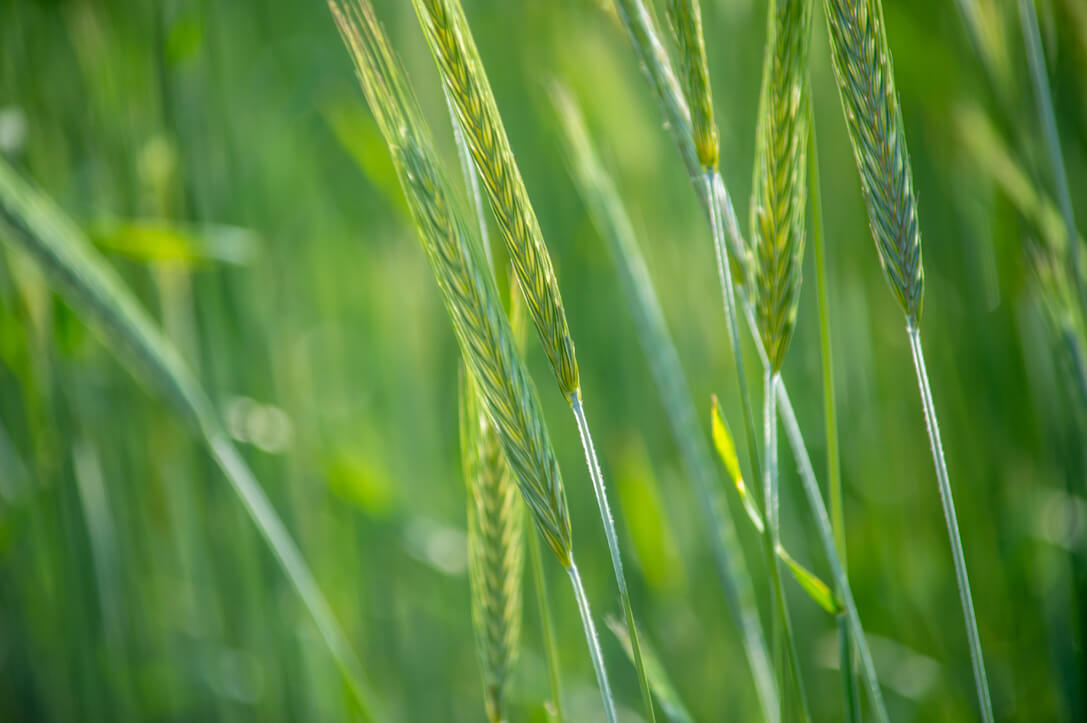
2. Triticale (x Triticosecale)
Triticale, a cross between cereal rye and wheat, offers excellent forage quality and great winter survivability. A favorite among livestock producers, triticale can be used as a spring or fall planted hay, silage production, or grazing. We sell both winter and spring varieties to fit your specific forage needs.
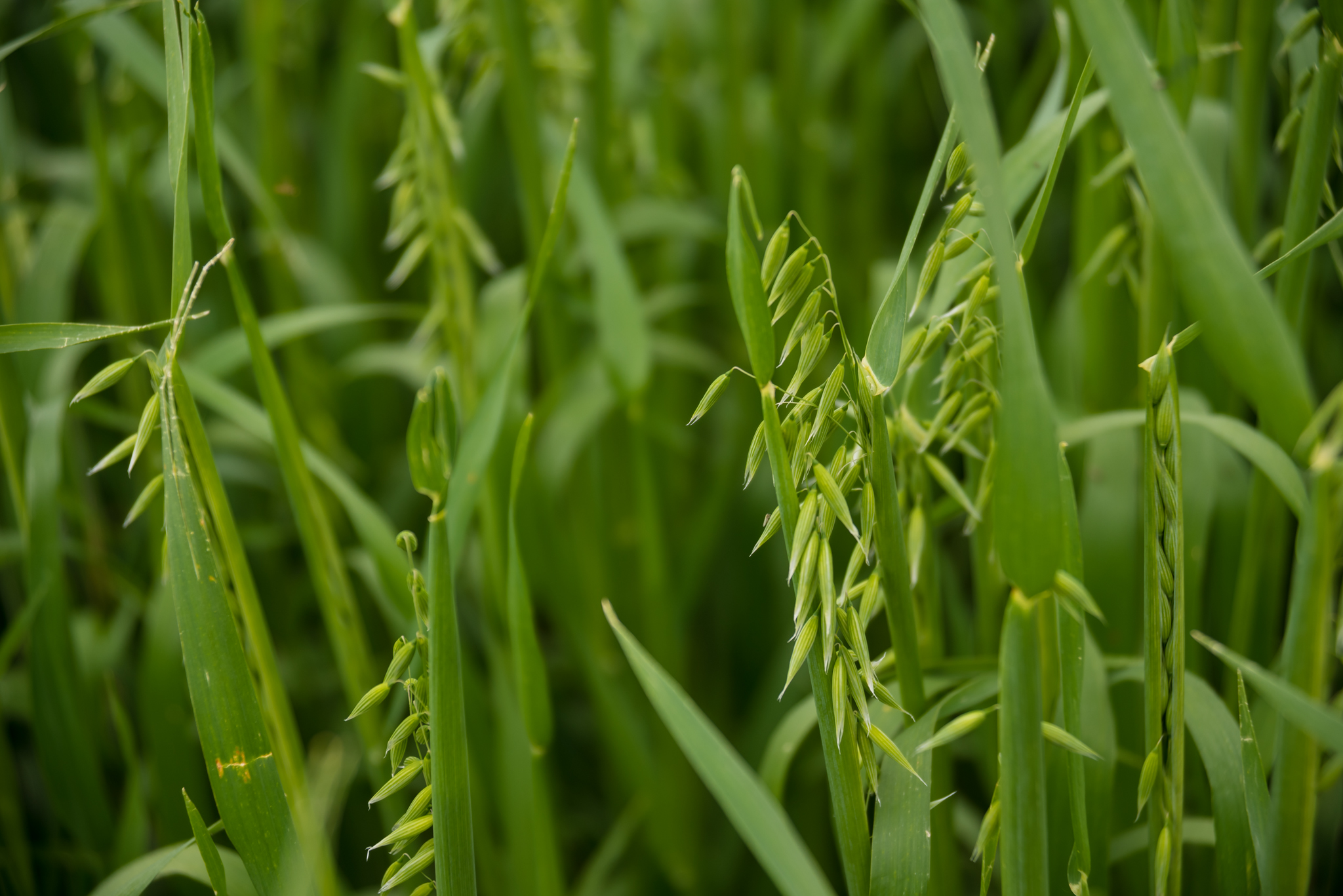
3. Oats (Avena sativa)
Oats are among the fastest growing species we offer. Whether you are looking for quick fall forage or spring erosion control, oats can be the ticket. Oats is highly mycorrhizal and is excellent at suppressing weeds and should be included in almost every spring mix.
4. Barley (Hordeum vulgare)
Barley has slightly less yield potential than oats, but makes up for it with higher forage quality. Barley comes as spring or winter varieties, and is commonly mixed with peas and brassicas for an excellent forage crop. Barley also boasts a higher salinity tolerance, than other cereals.
5. Sorghum-Sudan
These hybrids are developed by crossing sudan grass and forage sorghum. Sudangrass brings fine-stemmed and fast growing traits while the sorghum bring tonnage and forage quality to the partnership. THe hybrid vigor of sorghum-sudan give excellent yield, quality and regrowth which make them ideal for multi-cut hay or grazing situations. Traits such as brown mid rib (BMR) and photoperiod sensitive (PPS) are available.
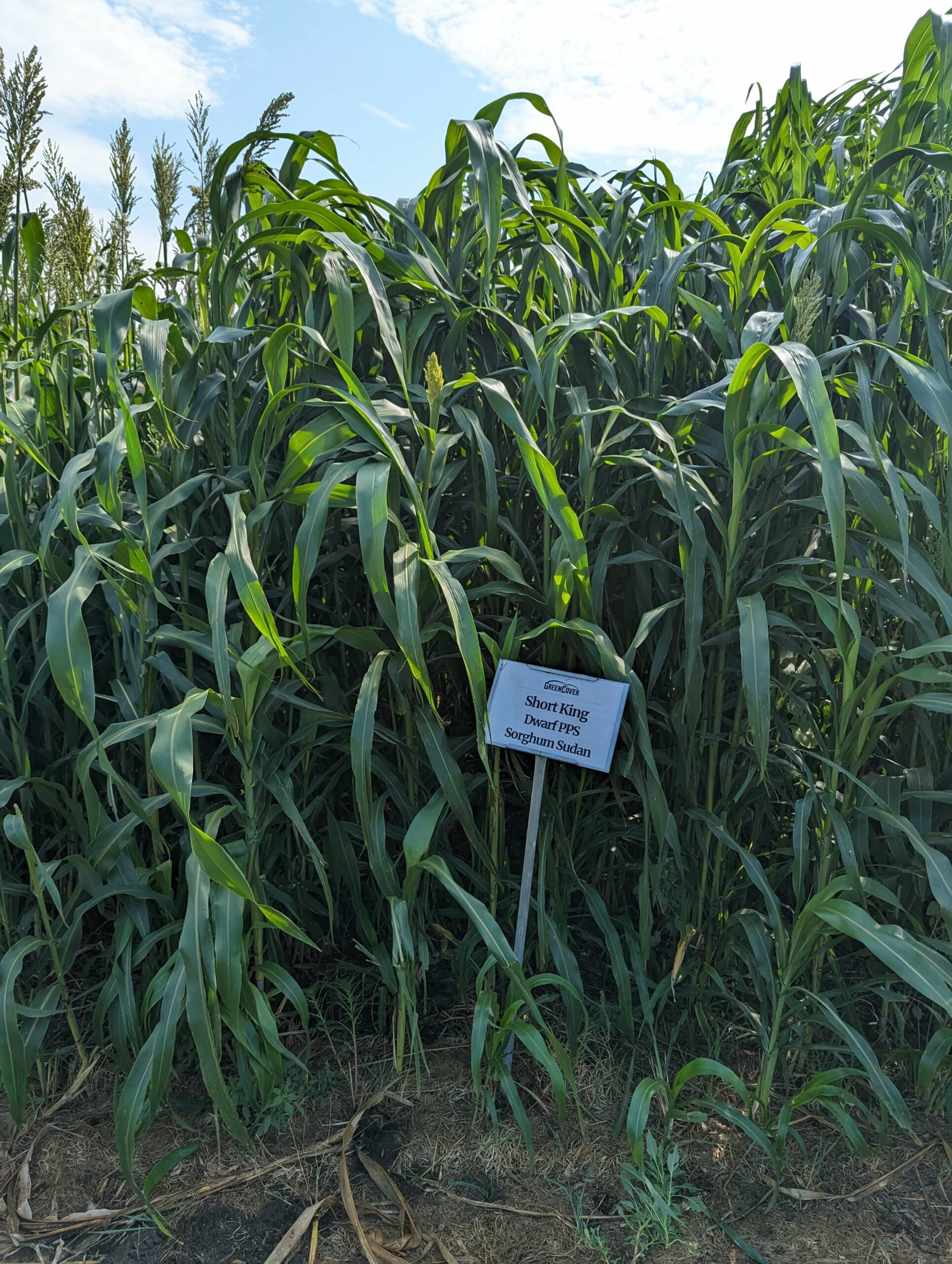
6. Forage Sorghum
Forage sorghum are coarse-stemmed long maturity sorghums with high biomass and sugar content. Forage sorghums do not regrow as well as sorghum-sudan but have higher yield potential if allowed to grow to maturity. They are a great silage option and work very well for winter stockpile forage. Traits such as brown mid rib (BMR) and photoperiod sensitive (PPS) are available.
7. Pearl Millet (Pennisetum glaucum)
Hybrid pearl millet is a tall, erect, small grained grass with improved forage production. It is relatively drought hardy and is adapted to a wide variety of soil types including sandy soils. Because pearl millet does not produce prussic acid, like sorghums, it is safer for livestock to graze. Hybrid pearl millet is longer season, produces more forage and regrows better than all of the other millets.
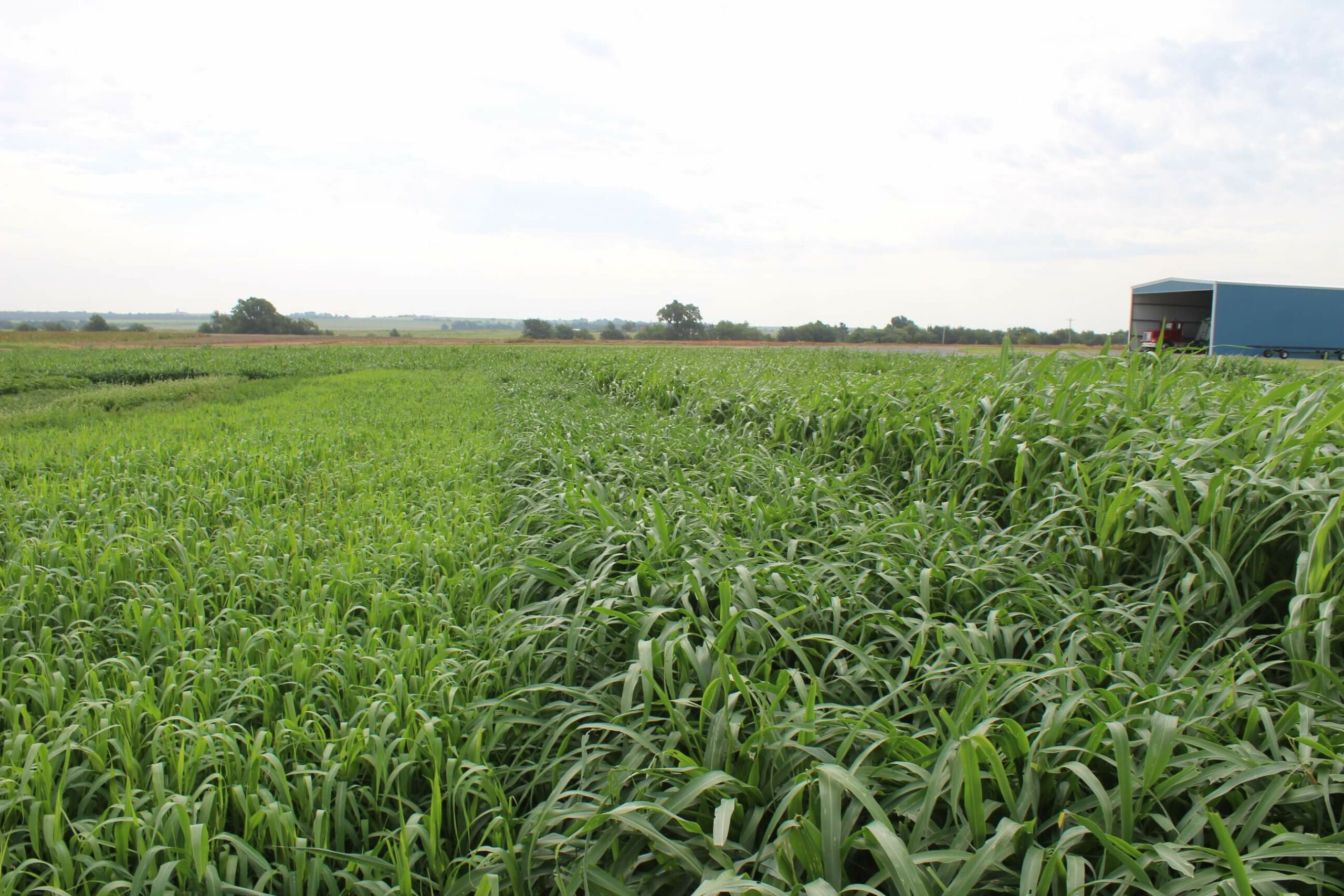
8. Foxtail Millet (Setaria italica )
White Wonder and Golden German Millet are warm season grass that do not yield like sorghum sudan, but can be a good option for quick growth hay with limited moisture. Millet grain is highly sought after by many bird species especially ground feeding game birds and therefore can be an excellent component in wildlife food plots.
9. Wheat (Triticum aestivum)
Wheat is another cool season grass known for its forage quality. Though it does not have the robust root system that rye is known for, this plant makes excellent livestock feed. Older varieties such as Scout 66 do have a much more substantial root system and can be used to prevent erosion and provide high-quality feed for livestock.
10. Annual Ryegrass (Lolium multiflorum)
Annual ryegrass is a vigorous cool-season grass with an extensive root system with unique root exudates that can break up compaction layers, even in hard clay soils. Annual ryegrass should not be confused with cereal rye as it is not as winter hardy and cannot be planted as late in the season.
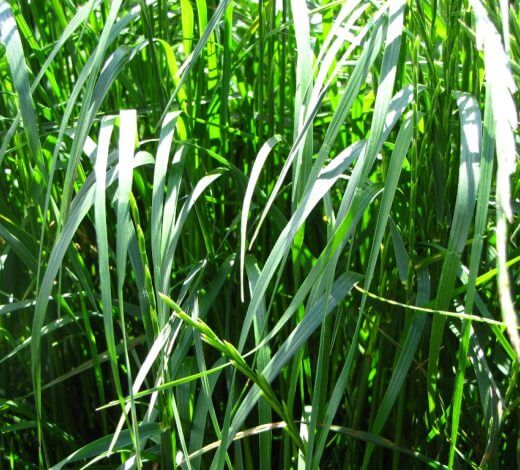
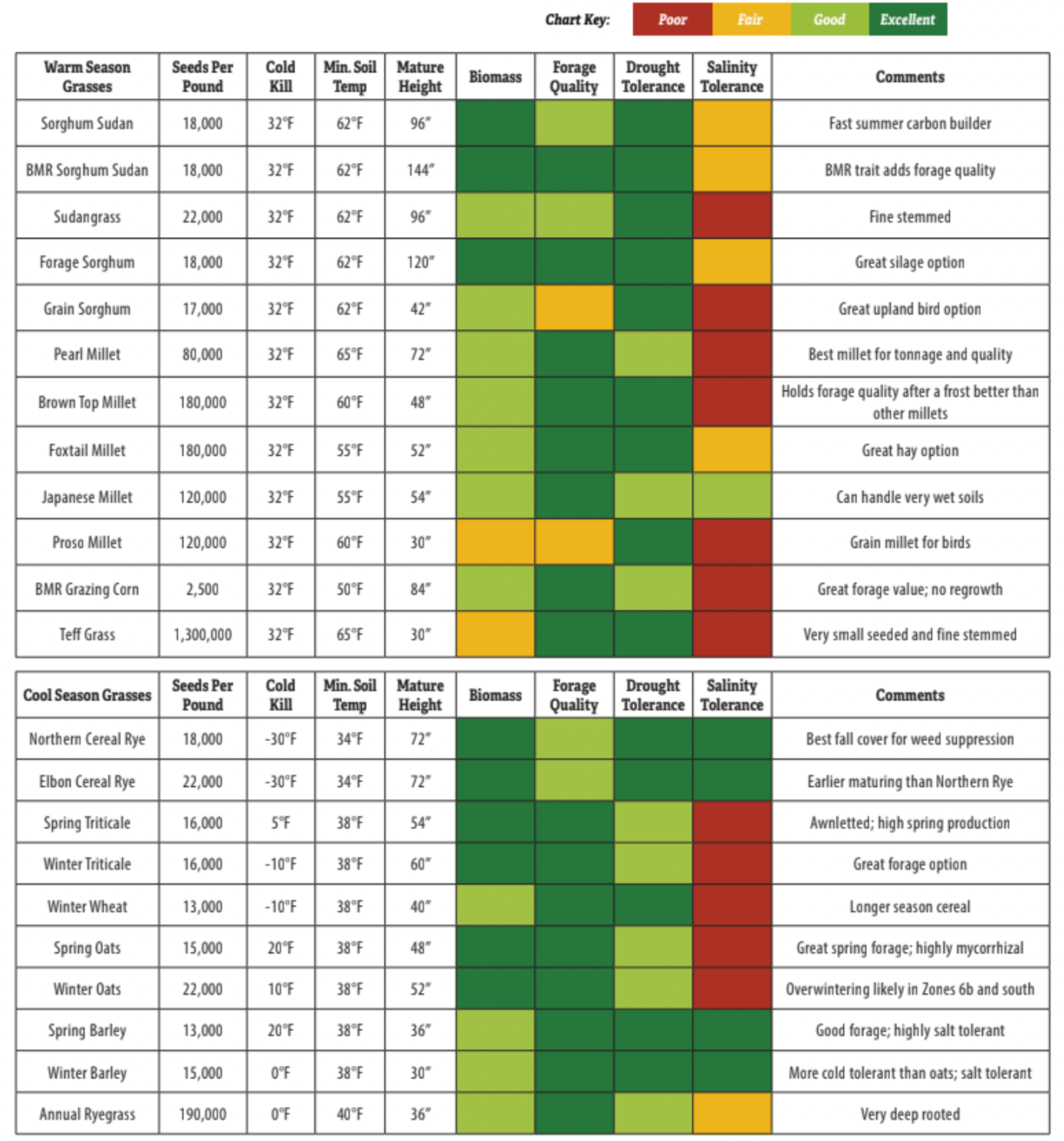
This article first appeared in the 10th Edition of Green Cover's Soil Health Resource Guide.
Also check out the 11th edition, our latest Soil Health Resource Guide, over 90 pages packed with scientific articles and fascinating stories from soil health experts, researchers, farmers, innovators, and more! All as our complimentary gift to you, a fellow soil health enthusiast!